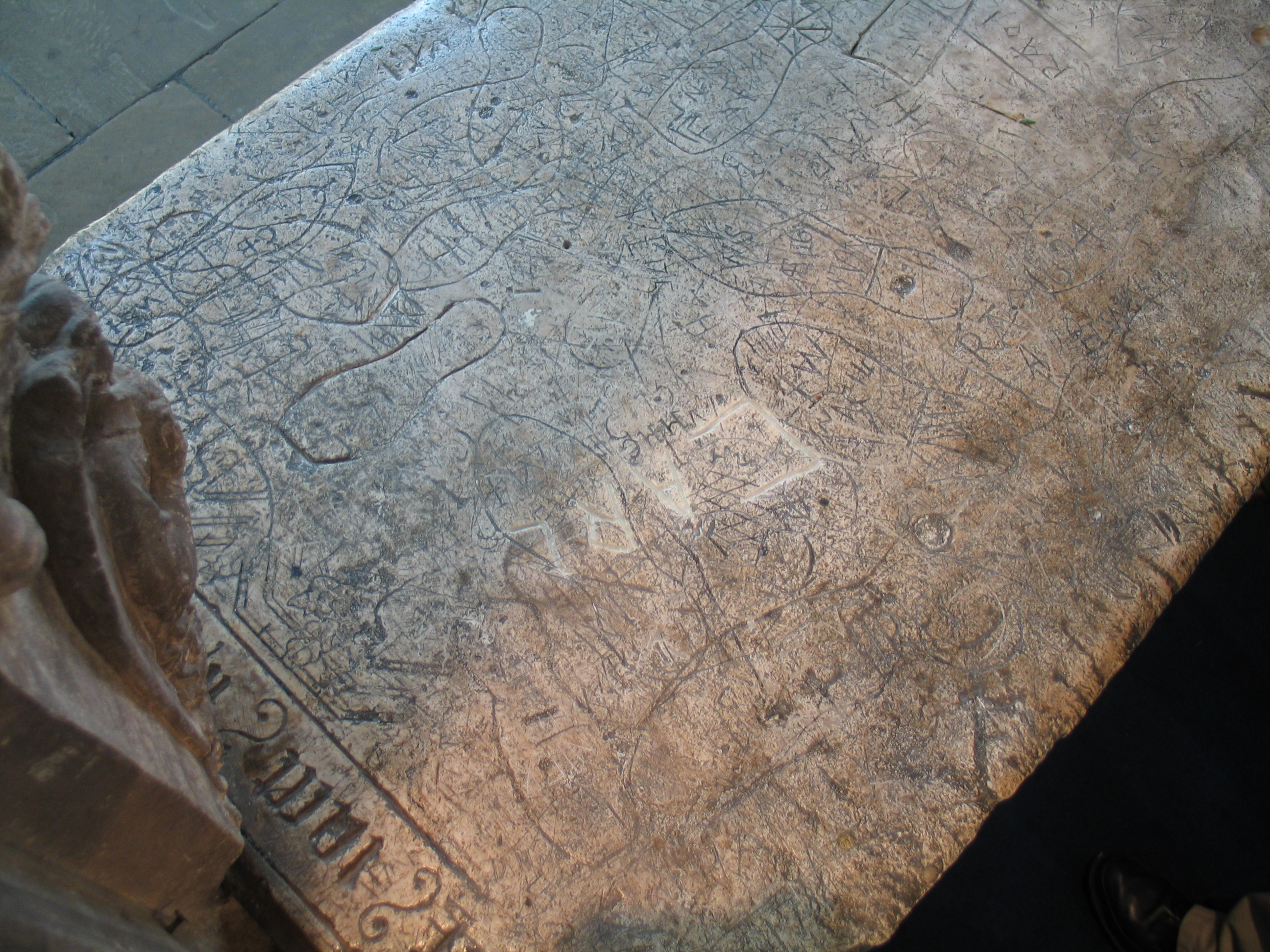by the Curious Scribbler
Following my last blog, a reader who goes on excursions with the Church Monuments Society has drawn my attention to another, much grander, chest tomb ornamented with footprints.
This is in East Yorkshire, in the 13th century church of St Nicholas, Hornsea. Here the chest tomb of Anthony St Quintin, a divine, who died in 1430, is densely ornamented with shoe outlines. They were even easier to carve than those in Anna Maria Hughes’s slate slab, for this grand tomb is made of alabaster.
Interpretation in the church suggests that these are Puritan footprints, and that the shoe shapes are consistent with the time of Charles II. Such an explanation does not help us with the footprints on the grave of a Welsh girl who died in 1777.

The alabaster tomb of Anthony St Quintin in St Nicholas, Church, Hornsea
Two other readers have mentioned not footprints but hand-prints in Wales. On a raised grave by the church door in Dolgellau are lots of children’s handprints of varying sizes, while there are life-size handprints around the top of the front boundary wall of the Quarry Hospital in Llanberis, Gwynedd. There may be several different stories behind these marks by which ordinary people left traces of their identity.
